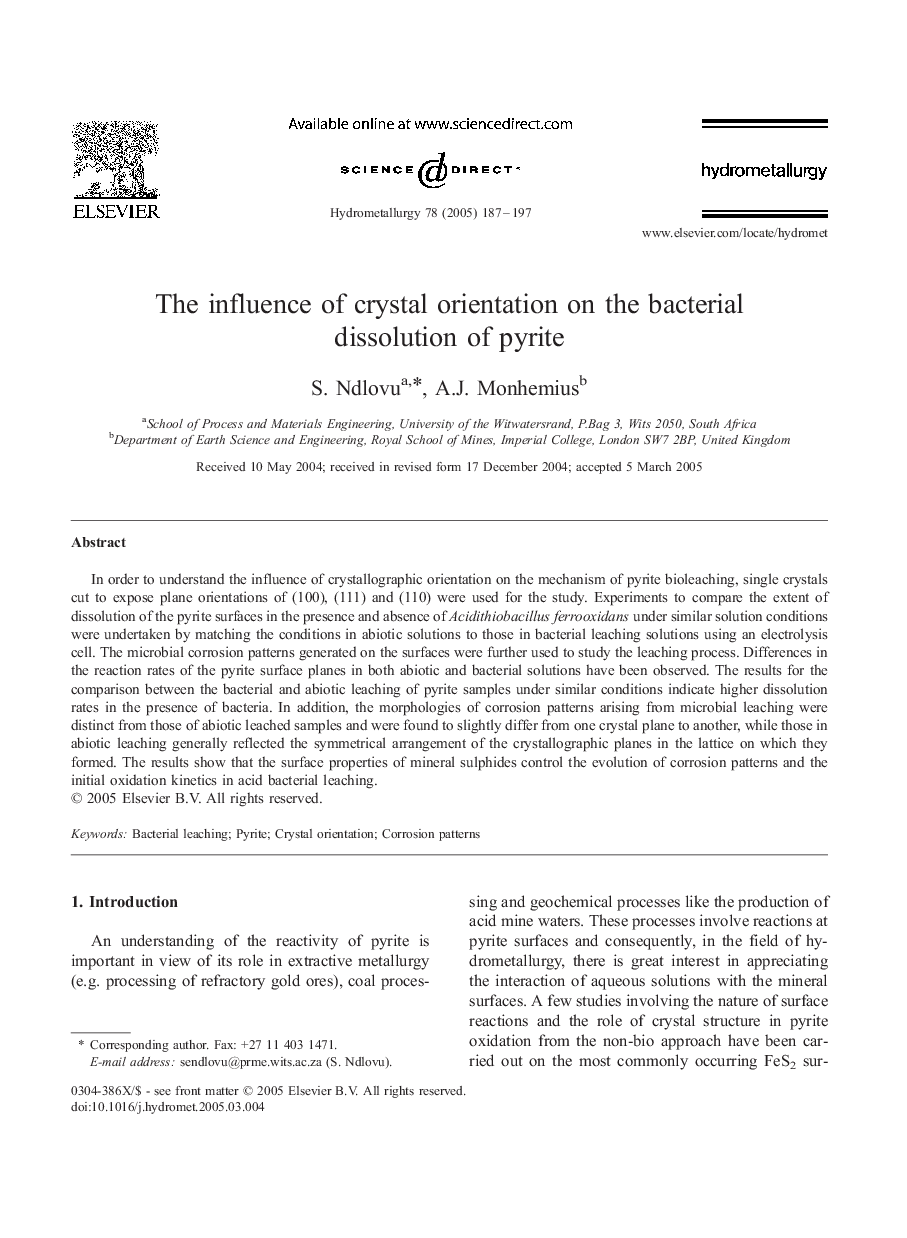| Article ID | Journal | Published Year | Pages | File Type |
|---|---|---|---|---|
| 9632540 | Hydrometallurgy | 2005 | 11 Pages |
Abstract
In order to understand the influence of crystallographic orientation on the mechanism of pyrite bioleaching, single crystals cut to expose plane orientations of (100), (111) and (110) were used for the study. Experiments to compare the extent of dissolution of the pyrite surfaces in the presence and absence of Acidithiobacillus ferrooxidans under similar solution conditions were undertaken by matching the conditions in abiotic solutions to those in bacterial leaching solutions using an electrolysis cell. The microbial corrosion patterns generated on the surfaces were further used to study the leaching process. Differences in the reaction rates of the pyrite surface planes in both abiotic and bacterial solutions have been observed. The results for the comparison between the bacterial and abiotic leaching of pyrite samples under similar conditions indicate higher dissolution rates in the presence of bacteria. In addition, the morphologies of corrosion patterns arising from microbial leaching were distinct from those of abiotic leached samples and were found to slightly differ from one crystal plane to another, while those in abiotic leaching generally reflected the symmetrical arrangement of the crystallographic planes in the lattice on which they formed. The results show that the surface properties of mineral sulphides control the evolution of corrosion patterns and the initial oxidation kinetics in acid bacterial leaching.
Related Topics
Physical Sciences and Engineering
Chemical Engineering
Chemical Engineering (General)
Authors
S. Ndlovu, A.J. Monhemius,
